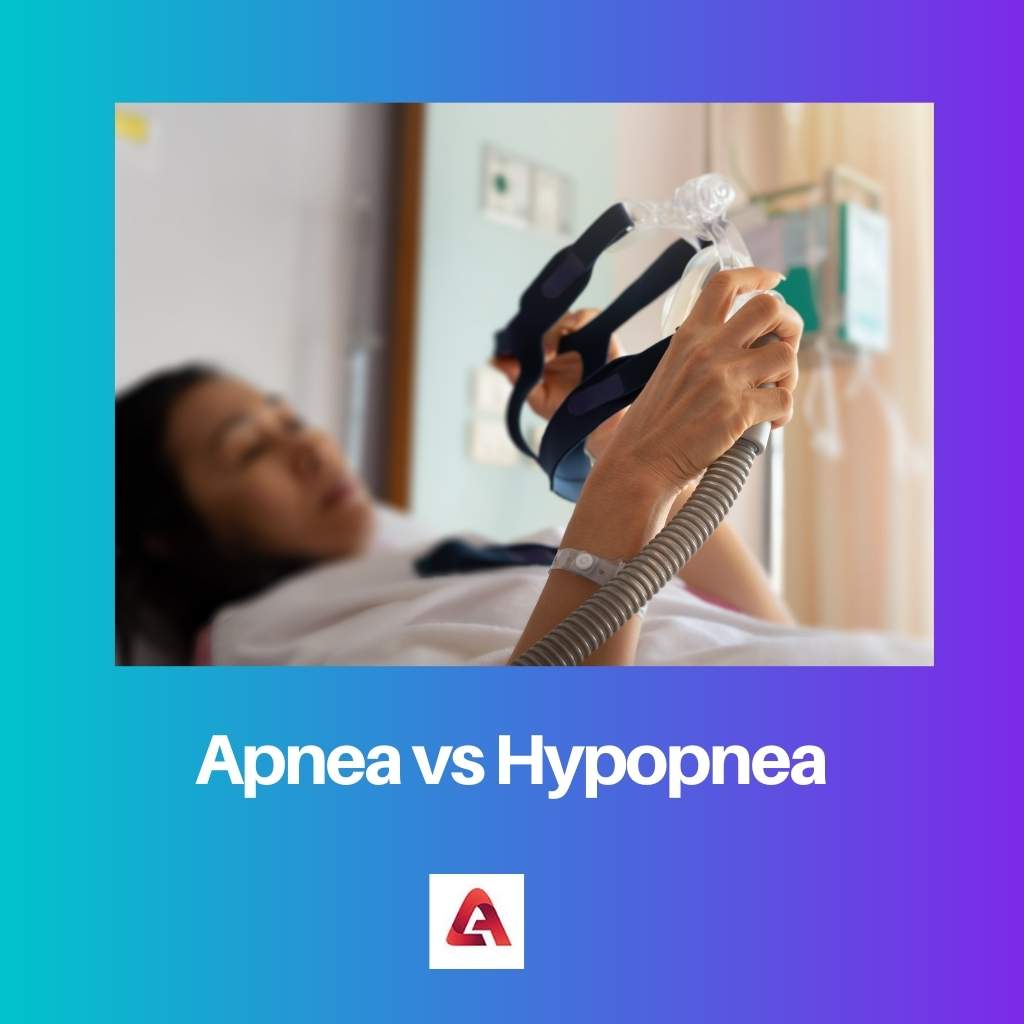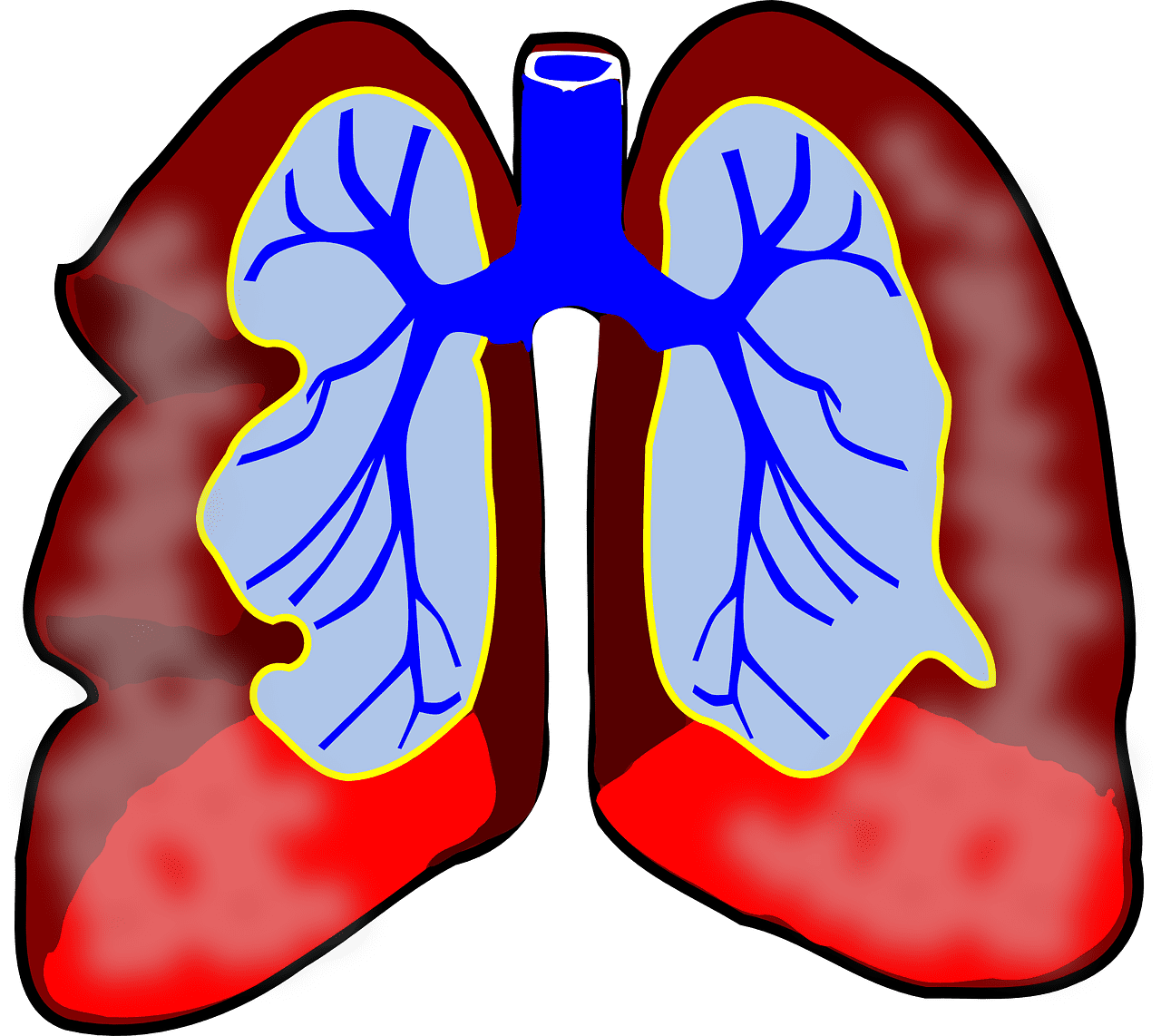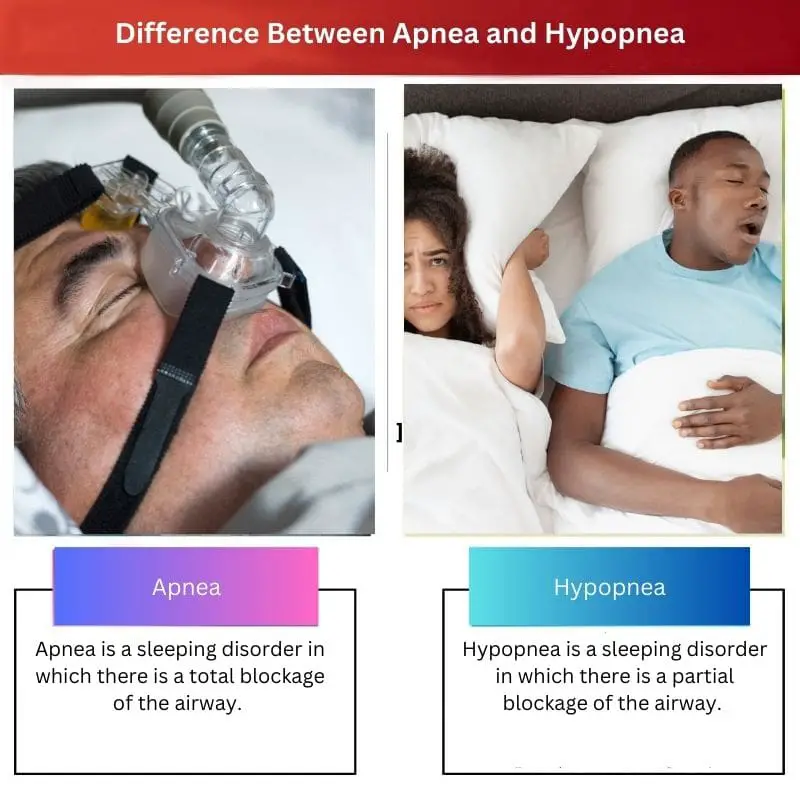It occurs due to obstruction of the pharynx, that is, the upper airway. These disorders can have a crucial impact on health. Two such conditions are- Apnea and Hypopnea.
Key Takeaways
- Apnea is a complete cessation of breathing during sleep, while hypopnea is a partial reduction in airflow.
- Both conditions can lead to disrupted sleep and potential health issues, such as cardiovascular problems.
- Treatment options for both conditions may include continuous positive airway pressure (CPAP) therapy and lifestyle changes.
Apnea vs Hypopnea
Apnea is a sleep disorder in which a person stops breathing for 10 seconds or more during sleep. Hypopnea is a sleep disorder in which a person experiences shallow breathing or a significant reduction in airflow during sleep, resulting in a decrease in oxygen levels in the blood.

The symptoms can include loud snoring and tiredness even after sleeping for a long time. It can occur when the back muscles in the throat relax.
Hypopnea occurs when there is a partial blockage of air. It can happen during sleep as well as when the person is awake. The airflow decreases for a few seconds in respirations, and less oxygen reaches the red blood cells.
Comparison Table
| Parameters Of Comparison | Apnea | Hypopnea |
|---|---|---|
| Definition | Apnea is a sleeping disorder in which there is a total blockage of the airway. | Hypopnea is a sleeping disorder in which there is a partial blockage of the airway. |
| Breathing mechanism | A person cannot breath completely in this problem. | A person faces slow breathing. |
| Types | Obstructive and central. | Central, obstructive and mixed. |
| Problems | You may face health problems like trouble in heart and high blood pressure. | Health problems like diabetes and cardiovascular diseases can happen. |
| Symptoms | Sudden headaches, frequent mood swings and sweating. | sexual dysfunction, weight gain and choking. |
What is Apnea?
Apnea is a crucial sleep-breathing disorder that can cause health problems if you ignore it for a long time. Heart trouble and high blood pressure are two of them.
Two types of sleep apnea are-
- Obstructive– It occurs when a person is facing repetitive airway blockage. Both partial and total blockage can happen. As the chest muscles work hard to open the airway, the pressure keeps on increasing.
- Central– In this, the brain fails to give signals to the muscles to breathe. It can happen due to unstable respiratory control, as this type of apnea relates to the functioning of the nervous system.
The symptoms are- dry mouth after waking up, sudden headaches, frequent mood swings, and sweating during sleep.

What is Hypopnea?
Hypopnea is a condition when a person has shallow breathing, and these episodes are known as hypopneas. The oxygen levels in the blood face a reduction.
It can occur when there is a partial blockage in the airway while the tissue in the throat becomes prominent.
Three types of hypopnea-
- Central– It happens when breathing reduces, and not the airflow. Some medications and problems in the brainstem can cause this type of hypopnea.
- Obstructive– obstructive sleep apnea-hypopnea syndrome(OSAHS) or obstructive hypopnea occurs when- there is a partial blockage in the airway.
- Mixed– This is due to a reduction in both breathing and airflow. It is a different category, yet it is a part of OSAHS. People who have this syndrome most likely face mixed hypopnea.
The symptoms of hypopnea are- sexual dysfunction, excess weight gain, choking while sleeping, sleepiness during the day, loud snoring, and mood swings.

Main Differences Between Apnea and Hypopnea
- If you ignore apnea, you can face problems in the heart and high blood pressure. On the other hand, if you do not treat hypopnea, you may face diabetes and cardiovascular diseases.
- Apnea is a severe disorder, while hypopnea is not a very severe condition.




